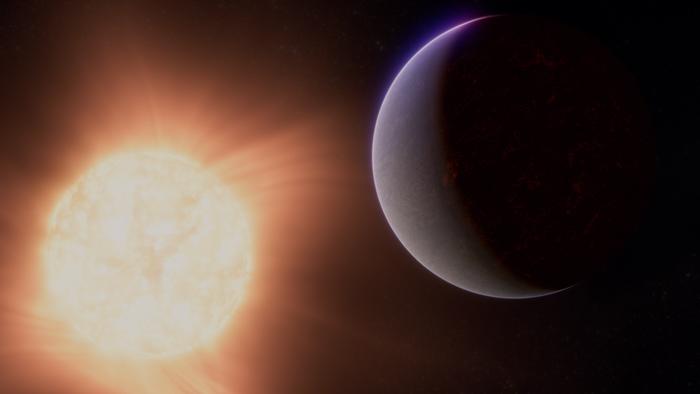Researchers using NASA’s James Webb Space Telescope have detected potential evidence of atmospheric gases surrounding 55 Cancri e, a hot rocky exoplanet located 41 light-years from Earth. This discovery marks the best evidence to date for the existence of a rocky planet atmosphere outside our solar system. The findings, published in Nature, suggest that Webb is pushing the boundaries of exoplanet characterization to include rocky planets.
A Super-Earth with a Molten Surface
55 Cancri e, also known as Janssen, is a super-Earth exoplanet orbiting the Sun-like star 55 Cancri in the constellation Cancer. With a diameter nearly twice that of Earth and a slightly greater density, the planet is likely similar in composition to the rocky planets in our solar system. However, its proximity to its star (about 1.4 million miles) suggests that its surface is likely a bubbling ocean of magma, with a dayside that faces the star at all times and a nightside in perpetual darkness.
“I’ve worked on this planet for more than a decade,” said Diana Dragomir, an exoplanet researcher at the University of New Mexico and co-author on the study. “It’s been really frustrating that none of the observations we’ve been getting have robustly solved these mysteries. I am thrilled that we’re finally getting some answers!”
Distinguishing Between Atmospheric Possibilities
Using Webb’s NIRCam (Near-Infrared Camera) and MIRI (Mid-Infrared Instrument), the team measured 4- to 12-micron infrared light coming from the planet to distinguish between two possibilities: a substantial atmosphere rich in volatiles like oxygen, nitrogen, and carbon dioxide, or a bare planet with a tenuous shroud of vaporized rock.
The team’s temperature measurements based on the planet’s thermal emission indicated a relatively low temperature of about 2,800 degrees Fahrenheit (~1540 degrees Celsius), suggesting the presence of a volatile-rich atmosphere efficiently distributing energy from the dayside to the nightside. The NIRCam data also showed patterns consistent with a volatile-rich atmosphere, with a dip in the spectrum between 4 and 5 microns indicating the presence of carbon monoxide or carbon dioxide.
While 55 Cancri e is far too hot to be habitable, researchers believe it could provide valuable insights into the interactions between atmospheres, surfaces, and interiors of rocky planets, potentially shedding light on the early conditions of Earth, Venus, and Mars.


